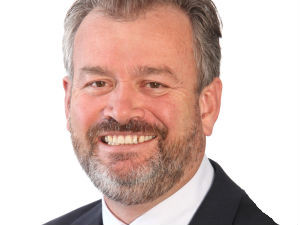
Seacom, the privately-owned cable company connecting South and Eastern Africa to Europe and Southern Asia, is on track to build what it says has always been "the missing link" in its 17 000km undersea network.
The new undersea fibre cable, which will run from Mtunzini - situated about halfway along KwaZulu-Natal's coastline - to the Eastern Cape, is due to be completed towards the end of next year, says Seacom CEO Mark Simpson.
Speaking on the importance of getting international connectivity into Africa at the 16th annual SatCom Africa conference this week, Simpson said there is still a lot of work that needs to be done on addressing supply in the continent's infrastructure eco-system. As a start, the South African Marine System (SAMS) - as it has provisionally been named - will bring higher redundancy to the Eastern Cape region, he says.
"SAMS will also go a long way in introducing more affordable and reliable connectivity, compared to terrestrial fibre, between Johannesburg and Cape Town."
Subsea developments
Telkom's SAT3/WASC/SAFE cable system is currently the only subsea system that extends along SA's southern shores. The equipage on SAT3/WASC and SAFE comprises 340Gbps and 440Gbps, respectively.
However, a number of new subsea cable ventures are in the pipeline in the South Atlantic region. South African company eFive Telecoms also plans expansion in what CEO Rosalind Thomas says is a bid to take advantage of the "geographically safe" area in terms of risks posed by cargo ships and trawlers.
eFive Telecoms is behind the proposed South Atlantic Express cable, announced in 2011, which plans to link SA and Angola to Brazil ? with onward connectivity to the US.
Thomas emphasises the value of having diversity and resilience, citing traffic figures: "Subsea cables carry almost 100% of the world's transoceanic Internet traffic, 99% of intercontinental digital traffic and almost 97% of transoceanic telecoms traffic."
The South Atlantic route is also earmarked by fibre-optic telecoms company i3 Africa, which underpins the construction of a BRICS cable that may be run along SA's coastline and connect to Fortaleza in Brazil.
The South Atlantic Cable System (also known as the Angola-Brazil Cable) is also planned for the South Atlantic Ocean. It will link Angola with Brazil, with a leg connecting the Brazilian islands of Fernando de Noronha.
Lastly, ICT infrastructure and consultancy company Techteledata announced earlier this year that it plans to build an undersea cable from Mtunzini to Cape Town - via East London and Port Elizabeth.
Lingering demand
Telecoms research firm Telegeography notes that both the east and west coasts of Africa have received dramatic increases in international connectivity over the last four years, with several new cables already constructed.
"Where capacity was once limited and expensive, capacity availability and prices are nearing those seen on the more developed east coast."
Despite plans and developments, however, Simpson says demand is not tapering off, "and any market is a function of both supply and demand".
He says Seacom is keen to complete the missing link of its network as soon as possible. "We are excited about the new build." The company is in the process of considering bidders for environmental impact studies and a seabed survey.
"The [SAMS] is a natural extension of the Seacom cable and will extend our operations and capability, introduce better performance and lower cost, protection for terrestrial Johannesburg to Cape Town routes, resilience and reliability ? and ultimately close the African ring between east and west."
Share